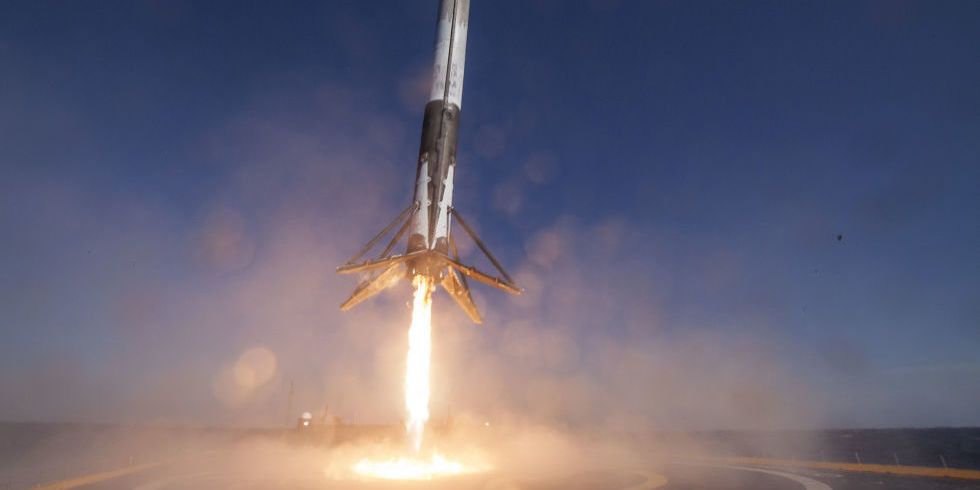Don't use capitals, we know how to read. Capitals are worst and inappropriate way of emphasizing a text.
Bold or
Italic is the appropriate way.
This is about spaceport NOT about transfer of technology. And just like an airport (you know the place where airplanes operate and such) they typically operate & maintained by LOCALS. Again this is about spaceport NOT about transfer of technology. That is why previously repeated my question as why ITAR is even an issue. Moreover, ITAR is about CONTEXT, it is not some blanket restriction.
And what will be launched from that spaceport? -SpaceX rockets, which some parts of it is controlled by ITAR.
From Wikipedia, what is included in ITAR:
...
XV: Spacecraft Systems and Associated Equipment
...
ITAR is not an international arm regulation like MTCR, thus it is at will of US to restrict any kind of equipment, article, text, knowledge falling into sections above. Highlighted part is related to spacecraft systems which includes anything related to it. Thus requires authorization to be transferred, relocated, sold.
It is not open to discussion whether it is subjected to ITAR or not, US is know for its strict behaviour that European or other satellite or space tech manufacturers had to create an ITAR free production line, it is already clear how strict state issite that citizenship, , from SpaceX's webgreen card or special authorization is needed for just an internship, or how they were controlling simple nuts and stuff under ITAR.
If there was a backdoor to avoid it, SpaceX or other private companies would benefit from that by employing foreigners (However US is known to grant citizenship or green-card for critical jobs), aside from relocating and establish a spaceport at another country.
A spaceport where rockets will be assembled,maintained at, launched from will be subjected to ITAR with no doubts.
Regarding to the civil aviation products, stating those are
free to export under EAR with specific exclusions:
Some space tech with proven single purpose, civilian, is also free from ITAR but not EAR.
Just in case you may not read:
In general, most civil aircraft, aircraft engines and aviation components can be permanently exported, or reexported (i.e., sold or leased) to most entities in most countries without a license. However, exports and reexports are generally prohibited:
- to embargoed countries (e.g., Cuba, Iran, Syria, Sudan, North Korea)
- to persons or entities specially designated by the U.S. government on various barred entity/persons lists
- if the exporter knows or has reason to know the product will be used in certain unlawful uses, such as the development of weapons of mass destruction, or, in the case of China, a military end-use (see Recent Developments below)
Which means US has excluded civil aviation products manufactured for single, civilian purpose, still subjects to EAR (Export Administration Regulation).
Over the last year, the U.S. government has initiated a number of investigations and enforcement actions designed to prevent Iran from obtaining U.S. origin aircraft, engines, and aviation components. BIS and OFAC have targeted aviation parts suppliers both in the U.S. and overseas, in transactions where aviation parts were allegedly ultimately destined for Iran. In addition, BIS has targeted foreign air carriers and aircraft owners/lessors, for allegedly attempting to sell, lease, or charter aircraft to Iranian airlines.
Even in situations where the exporter has no knowledge of a subsequent reexport to Iran, investigations of U.S. persons can be invasive and disruptive. In addition, funds transfers may be blocked or rejected and designation of entities can have serious repercussions not only on a designated entity, but also on lenders, lessors and other business partners.
And when it may subject to ITAR:
In August 2008, the State Department published rules seeking to provide some clarity as to when an engine or aircraft component would be controlled as a military item under ITAR versus as a “dual-use” item under EAR.
6 Basically, the rules state that:
- if designed exclusively for civil (non-military) aircraft, aircraft engines and aviation components will be controlled under the “dual-use” EAR regime
- if designed for military aircraft or military aircraft engines, an aviation part or component will be controlled under the ITAR
- if the part or component does not fall in one of the above (such as components that are to be used on civil and military variants of the same basic engine), the test gets more complex. In general, if the part or component is (i) “standard equipment”; (ii) covered under an FAA type certificate or supplemental type certificate (excluding certain military commercial derivative aircraft); and (iii) forms an integral part of such aircraft, then generally it will be controlled under the EAR as a “dual-use” item. However, certain new design components including hot section components such as blades, vanes, discs, full authority digital engine controls and digital electronic engine controls will require advance classification by the State Department.7
Furthermore, space tech may also subject to MTCR; personnel which operates, maintains the facility and equipment might be restricted with nationality of the origin state:
Greatest restraint is applied to what are known as Category I items. These items include complete rocket systems (including ballistic missiles, space launch vehicles and sounding rockets) and unmanned air vehicle systems (including cruise missiles systems, target and reconnaissance drones) with capabilities exceeding a 300km/500kg range/payload threshold; production facilities for such systems; and major sub-systems including rocket stages, re-entry vehicles, rocket engines, guidance systems and warhead mechanisms.








